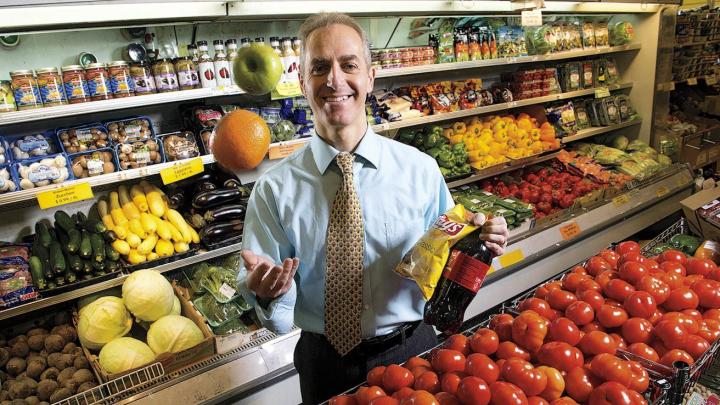Anecdotally, the cost of a healthy diet—rich in fruits, vegetables, fish, and nuts, for example—has been assumed to be higher than that of a diet consisting of unhealthy processed foods. Now research from the Harvard School of Public Health (HSPH) has quantified that cost difference, often cited as a barrier to eating well, as roughly $1.50 more per person per day. That’s “smaller than many people might have expected,” says senior study author Dariush Mozaffarian, an associate professor at HSPH and Harvard Medical School. It’s “the cost of a cup of coffee,” or about $550 a year ($2,200 for a family of four).
The findings, based on a meta-analysis of 27 studies undertaken in 10 high-income countries, are part of a larger effort to understand how government policy and existing food-supply systems affect health. The research shows that a healthy diet is affordable for most people, Mozaffarian says, given that “for 60 percent to 70 percent of Americans, $1.50 a day is not a big deal.” Nevertheless, he adds, it is a “big barrier” for the remaining 30 percent to 40 percent of the population—even though the economic costs of chronic diseases related to poor diet vastly exceed the higher price of healthy food. There is a public benefit, therefore, to ensuring that everyone eats well, as he and his fellow authors, including research fellows Ashkan Afshin, Gitanjali Singh, and Mayuree Rao (the lead author), point out.
There is broad consensus about which foods are particularly good or bad. “We should emphasize reducing the things we know are unhealthy like processed meats, highly refined starches, sugars, and carbohydrates, trans fat, and sodium,” Mozaffarian says, and “highlight the things we know are good like fruits, vegetables, nuts, vegetable oils, and fish. Many other foods, like chicken or eggs, are “kind of in the middle”—neutral in terms of health effects.
Unhealthy diets cost less, in part, because producers are focused on providing “inexpensive, high-volume commodities. This is partly an accident of history,” Mozaffarian explains. “The main goal of food production through most of human history and even into the 1950s and ’60s was producing as many inexpensive calories as possible that were safe from bacterial contamination and toxins. A whole system was built around creating, shipping and storing a handful of products—rice, wheat, soy.” New systems “to grow, ship, and store fruits, vegetables, nuts, and seafood,” could be created, “but it could take decades without strong government support.”
Even though the detrimental design of the present system “wasn’t purposeful,” he continues, large companies now have “a financial interest in selling processed foods that have very inexpensive ingredients, often [costing only] pennies on the dollar.”
To change that, Mozaffarian advocates taxing unhealthy foods and using the revenue to subsidize healthy choices. When a tax and subsidy are paired, he explains, food on balance costs the same, and healthier diets actually become less expensive.
U.S. policies are in fact counterproductive to bringing healthy foods to supermarkets in low-income neighborhoods, he points out: for example, food stamps are used to purchase $2 billion of sugar-sweetened beverages a year. “The average lower-income teen drinks two to three servings of soft drinks per day,” he reports. “Using our tax dollars to create death and disability that we then pay for in our healthcare system—that’s obviously insane.” He advocates reforming the program so that it adheres to the same sensible nutrition guidelines required by WIC, the federal government’s special supplemental nutrition program for women, infants, and children.
“That would have a transforming effect on the food supply,” he concludes. Because most food-stamp recipients live in low-income neighborhoods, a policy shift would change what was stocked in local stores. “Many have only a 7-11 for shopping. [Removing that] incentive to pack the aisles with Coke, candy, and chips would improve the health not only of people on food stamps, but the health of the entire neighborhood.”
Mozaffarian’s interest in the cost of healthy food is not just domestic—it is global. Because existing food-aid programs focus on hunger and calories, he says, “I fear that we are making the same mistake in low-income countries that we made in the U.S. in the last 100 years. By focusing only on getting as many calories as possible to people without thinking about the quality,” he warns, policymakers are promoting the same harmful long-term price disparities, and, ultimately, “We risk recreating there the same obesity and diabetes epidemic we have here.”








